Text
A bit of anarchy in the band!
“Let’s go back to our feet. Now hand clapping. Have we worked hard enough yet?”
“Today what we thought we’d do is play lots of music.” This was award-winning composer Stephen Deazley’s opening gambit aimed at our group of young musicians at their first workshop and signalling the start of our exciting new music initiative PUNKIT!.
The group of youngsters, aged between 11 and 14, turned up rather quietly (bar the odd reassuringly confident cheeky chappy), and seemed a little too self aware in the opening minutes of the rehearsal, a few nervous glances and giggles were exchanged amongst them as they gauged the mood of the room and checked each other out. But this was pretty swiftly replaced with some enthusiastic noise and red-cheeked enthusiasm as Stephen and internationally renowned percussionist Joby Burgess got them right into the thick of a rousing percussive performance.
We had feet stamping, hand clapping, body slapping, claves were struck together, cowbells ringing, frame drums walloped and an impressive battering of a plastic box, which unfortunately – or rather fortunately, it’s all about the Punk Attitude here - didn’t survive the session.
As the two and a half hour rehearsal went on, it became abundantly clear that we were watching something in equal parts exciting and impressive. If their first shot at it is anything to go by, we’re looking at a spectacular performance come July. We made up a small audience, but we were a captivated audience and found it impossible to keep still.
Despite their youth and inexperience, this is going to be less an end of term concert, and more an experimental rock show, with all the energy and raw talent that goes with it.

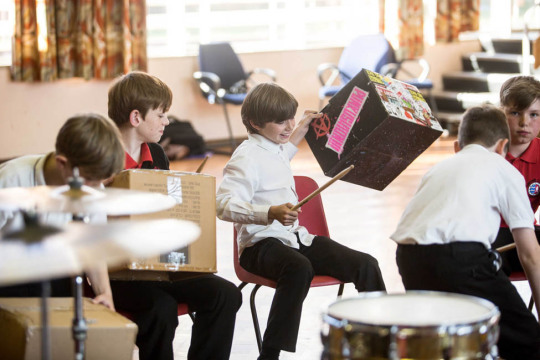

#Stephen Deazley#Joby Burgess#Bedford Creative Arts#Art#Bedford#Music#Young People#Participation#Punkit#Taking Part#Percussion#Love Music
2 notes
·
View notes
Text
“Overall, how happy did you feel yesterday?” *
Thursday March 20th is the United Nations International Day of Happiness.
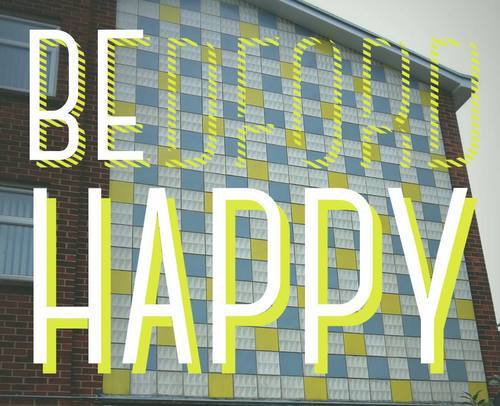
Happiness is the zeitgeist, in magazine articles and the national press, with artists, scientists, writers, filmmakers and politicians getting on board to explore, discuss and tell us what makes us all happy.
Having read more than one book in the last few years that claims to study happiness across the world, I too am interested in this debate. Working with artists and people I have a vested interest in finding evidence that collaborating to make something creative is good for us.
But I don’t know if happiness can be universal or measurable? Is it something deeply personal to each individual or a set of simple rules to be followed? Can happiness be an art or a science or both?
And what is it that art and artists can contribute to this debate?
There is a growing ‘science’ of happiness backed up by research from a variety of fields. The website Action for Happiness provides 10 keys for happiness.
Other books and websites provide rules, habits or manifestos for happiness. The Happiness Project a recent book and website by Gretchen Rubin, charts her year of following a similar set of rules for happiness.
Since its launch on 30th December over 350,000 people have currently taken on the 100 days of happiness challenge – I’m sure we all know someone doing this. Can you be happy for 100 days in a row?
As a new dog owner I am very happy to endorse the view of a Harvard Medical School study that has shown the secret of a happy life for men to be a good marriage and a puppy! Not as easy to achieve as it sounds.
There are a number of interesting initiatives across the country aimed at making towns and cities happier places to live. There is Happy City Bristol and Luton has just taken the internet by storm with its own take on Pharrell Williams’ Happy, Luton Happy.
On coming into office in 2010 David Cameron declared that he would make happiness the new GDP and in 2013 the Government published the findings of its first national wellbeing survey. The report cited Bedford as being one the unhappiest places in the country.
In response we commissioned artist and activist Dan Thompson to explore happiness in Bedford and Bedford Happy was born. Are we really unhappier in Bedford than anywhere else? Can doing art and being part of an art project make a difference?
Most of the research, whether in the name of art or science highlights the role of the arts and creativity in our happiness.
A recent project by the LSE used an iphone app to map our happiness levels associated with various activities - and the results showed that after sex and exercise, the next most happiness-inducing activities were all arts and cultural. Being: 1. Theatre/dance/concert, 2.Singing/performing, 3. Exhibition/museum/library, and 4. Hobbies/arts/crafts
The thing that strikes me about the results of the LSE study is that the activities rising to the top are those which involve more than one dimension at once: pleasure and challenge, or emotional resonance and social bonding.
I enjoy singing in The Bedford Arts Choir – it’s not always easy! But there is more pleasure to be gained from hard-won achievement.
In line with much of the happiness science, many artists and writers have tried to either map happiness across geography, or catalogue and capture happiness as some kind of essential set of rules, such as the play, Sixteen Types of Happiness by Big State Theatre. I remember crying and laughing in the theatre – but it definitely made me happy.
Artists Invisible Flock are currently touring Bring The Happy – which again uses maps to locate happiness in a place, resulting in a musical performance described as somewhere between a wake and a wedding.
Both the arts and science provide compelling evidence for the ability of giving gifts and gratitude, to increase our happiness from Lewis Hyde’s book The Gift which describes all artistic practice as working within a ‘gift economy’ to a recent Science of Happiness study.
Bedford’s own Happiness Matters is gifting us The Bedford Happiness Experience on Saturday 22nd March, a day of experiences and a Ceilidh.
Going back to my initial inspiration for Bedford Happy – can you really prove or say that one town is less happy than another?
Saturday 29th March will be the Big Bedford Happy Day. Dan Thompson plans to create more happiness through encouraging gratitude and making us all a little more aware of when and why we are happy. There will be happy fudge from Arcadia Sweetshop, and a chance to rediscover your vinyl collection!
You can still contribute to Bedford Happy, and spread a little happiness of your own by telling us who or what makes you happy in Bedford.
Follow #bedfordhappy on Twitter or look for the facebook page
What all of the science, art and general advice seems to be saying is we all benefit from stopping and taking notice of our own and others happiness, and art is one way we can do that with other people.
* Question from the ONS wellbeing survey
Dawn
1 note
·
View note
Video
vimeo
Dancing with the wind, becoming part of a collective performance, creating the folklore of tomorrow in Dunstable.
All this year Dunstablians have been collaborating with Laurence Payot and a team of creative people from in and outside of the town. They have been defining what is important and meaningful for people in Dunstable today, and inventing a new legend for the future. They imagined hundreds of people would gather on the Dunstable Downs to celebrate this beautiful landscape and what brings it to life: the wind.
Commissioned and produced by Bedford Creative Arts.
This new tradition first took place in September 2013. Over a thousand people gathered on the downs in gale force winds, having spent all summer ‘charming the wind’ in the town below. Costumes were worn, people sung and danced, before attaching their windy hopes and memories to a spectacular giant shining kite.
#art#dunstable#laurence payot#community#dunstable downs#wind#kite#folklore#folk#we are now#participation#film
1 note
·
View note
Video
vimeo
For Bedford Creative Arts' Autumn 2013 mini commission artist Jan Uprichard subverted our daily routine with a dreamlike film of a sea view ordinarily unobtainable in Bedford.
The film popped up at various locations in Bedford town centre for a week in October; the bus station, British Heart Foundation, the council one stop shop on Horne Lane and waiting area in Borough Hall, where there was also the chance to make and keep your own pocket sized sea view – a flip book version of the film.
At first glance the film seemed like a still image, but over time the peaceful, idyllic scene that it depicted started to go in and out of focus. There was a lighthouse with a light shining off and on whilst she was filming, which was allowed to disrupt the focus of the camera, this added to the dreamlike quality of the image.
0 notes
Photo
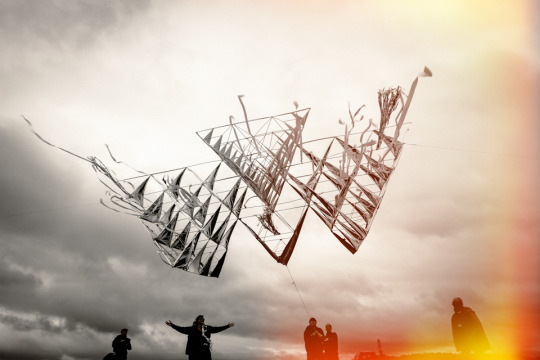

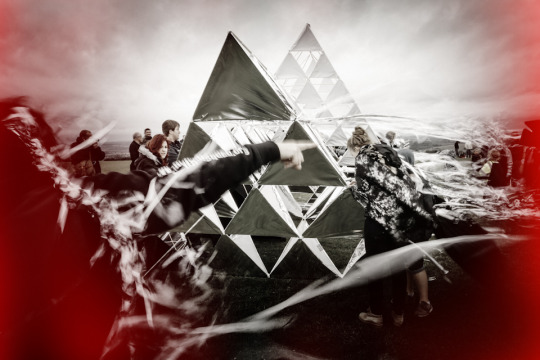
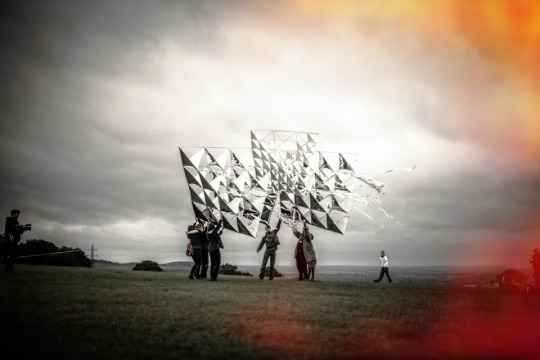




Dancing with the wind, becoming part of a collective performance, creating the folklore of tomorrow in Dunstable.
All this year Dunstablians have been collaborating with Laurence a team of creative people from in and outside of the town. They have been defining what is important and meaningful for us in Dunstable today, and inventing a new legend for the future. They imagined hundreds of people would gather on the Dunstable Downs to celebrate this beautiful landscape and what brings it to life: the wind.
This new tradition first took place in September 2013. Over a thousand people gathered on the downs in gale force winds, having spent all summer ‘charming the wind’ in the town below. Costumes were worn, people sung and danced, before attaching their windy hopes and memories to a spectacular giant shining kite.
Commissioned and produced by Bedford Creative Arts.
Photography by Graham Watson and Cat Lane.
#art#dunstable#participation#folk#folklore#kite#laurence payot#dunstable downs#we are now#community#wind
3 notes
·
View notes
Photo
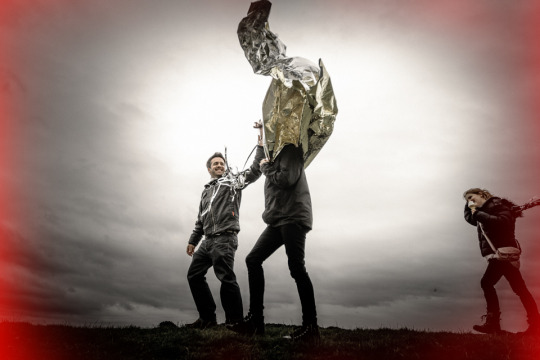

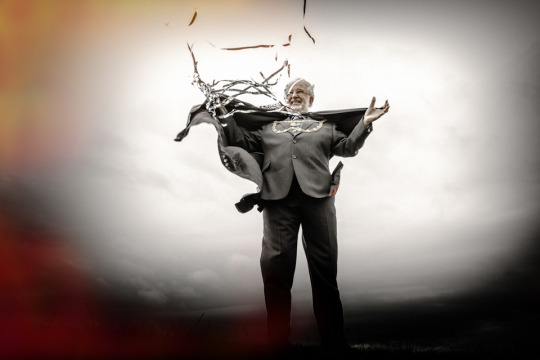

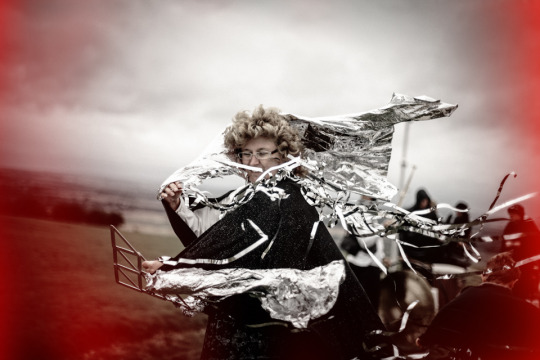

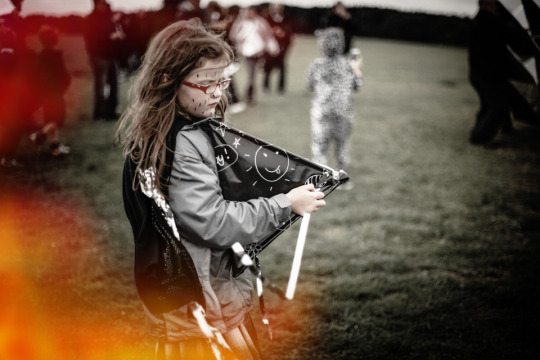
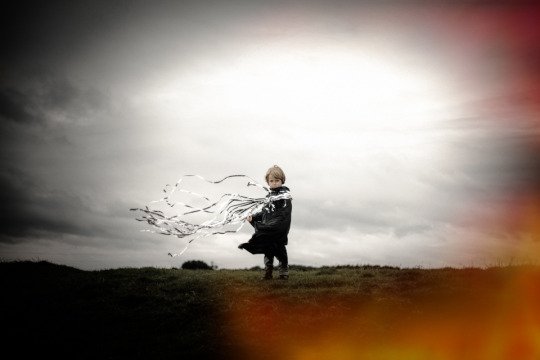

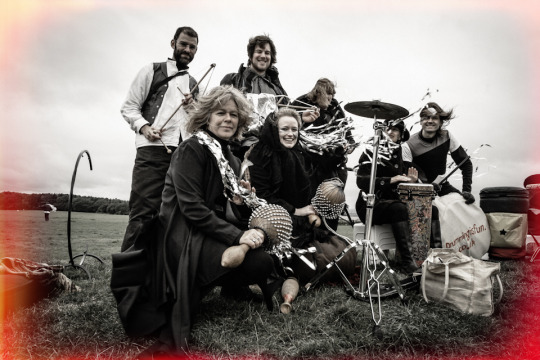
Dancing with the wind, becoming part of a collective performance, creating the folklore of tomorrow in Dunstable.
All this year Dunstablians have been collaborating with Laurence a team of creative people from in and outside of the town. They have been defining what is important and meaningful for us in Dunstable today, and inventing a new legend for the future. They imagined hundreds of people would gather on the Dunstable Downs to celebrate this beautiful landscape and what brings it to life: the wind.
This new tradition first took place in September 2013. Over a thousand people gathered on the downs in gale force winds, having spent all summer ‘charming the wind’ in the town below. Costumes were worn, people sung and danced, before attaching their windy hopes and memories to a spectacular giant shining kite.
Commissioned and produced by Bedford Creative Arts.
Photography by Graham Watson and Cat Lane.
#we are now#dunstable#dunstable downs#art#laurence payot#community#participation#performance#kite#wind#folk#folklore
0 notes
Photo
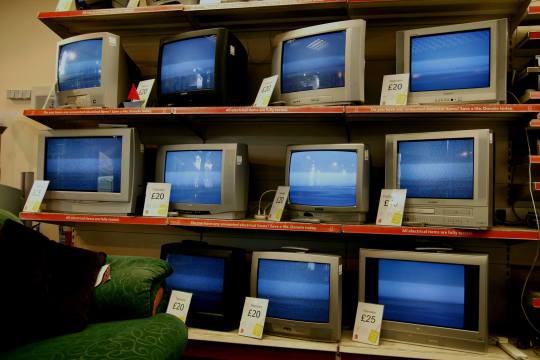





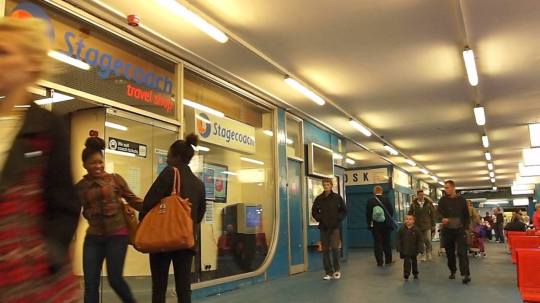
For our most recent mini commission artist Jan Uprichard subverted our daily routine with a dreamlike film of a sea view ordinarily unobtainable in Bedford.
The film popped up at various locations in Bedford town centre, the bus station, British Heart Foundation, the council one stop shop on Horne Lane and waiting area in Borough Hall, where there was also the chance to make and keep your own pocket sized sea view - a flip book version of the film.
At first glance the film seemed like a still image, but over time the peaceful, idyllic scene that it depicted started to go in and out of focus. There was a lighthouse with a light shining off and on whilst she was filming, which was allowed to disrupt the focus of the camera, this added to the dreamlike quality of the image.
Photos by Jan Uprichard and Kristian Purcell
1 note
·
View note
Text
Folklore, local identity and the Bay City Rollers
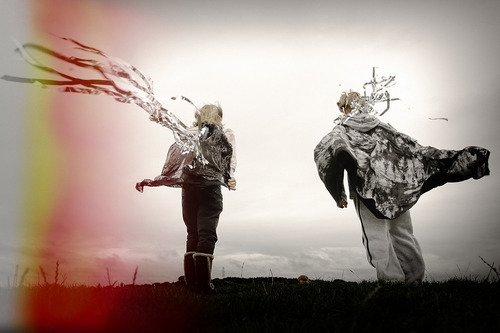
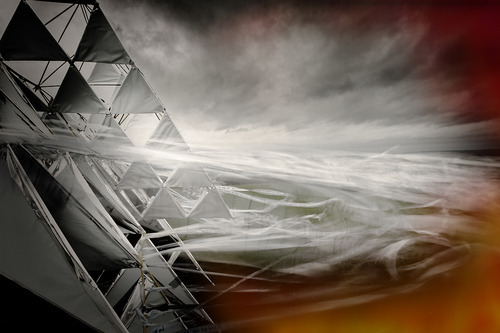
On Sunday thousands of Dunstable locals gathered on the downs to ‘charm the wind’ as part of our commission with artist Laurence Payot. For nearly a year now Laurence has been working with the population of the town to ‘create the legend of tomorrow’, in response to our call for an artist led project that would work with communities to explore ideas of common ownership, what we have in common, and what makes something ‘ours’.
The above photos of Sunday’s events were taken by Graham Watson, more will follow soon, along with a short film. I’ve collected some participants’ photos and reactions on storify.
Something we really wanted to achieve with this project was a sense of this being actually folkloric, not just a re-enactment of something that might be. If you stand back and look at any folk tradition - morris dancing, green men, any number of long standing local festivals in England and world wide - they basically make no sense. But participants, and those with a shared cultural heritage, just accept the logic of the act - community spirit kicks in, everyone gets involved because ‘this is what we do’.
Exactly two years ago I was at perhaps one of the most well known of those esoteric English folk festivals, the 1000 year old Egremont Crab Fair, adding some new arty things into the proceedings for north western arts festival Abandon Normal Devices.
What I realised then is that as much as the hundreds of years old traditions themselves - the apple cart parade, world gurning championships and the greasy pole (recently reinstated as ‘public art’ by Jeremy Deller, Alan Kane and Grizedale Arts) - it’s the little things that make the community what it is, bind people together, and make the yearly event itself endure.
The little things of which a knowledge, even more than the much older folkloric acts themselves, is what marks the participants from the observers, the locals from the interlopers.
Like the way a packed crowd at the evening festivities all leapt to their feet for a rousing sing-along to Shang-a-lang, or the terrifying boos a first time contender in the gurning contest received when it was announced he was ‘from Liverpool’, much more serious than the jovial booing that accompanied known rivals from neighbouring village Cleator Moor.
Or how the outdoor stage, rather than being hired in, was constructed from scratch over the course of a week by a local scaffolding company and team of volunteers (and how it didn’t really matter when most of the day’s performances were rained off).
In BCA’s artistic policy we talk about personalisation, digital technology and globalisation - as we become more connected globally, we become less connected to our own locality. Towns become homogenised and local identities lost. But people and communities remain.
So what next for our wind charming tradition? We’re not yet sure, but what I do know is that it won’t necessarily be any of us (the creative team) who decides. Dunstable created our wind charming festival, and what happens now will be as dependent on the little quirks of the town and its people as it is on the big decisions we might be able to make.
Jennie
2 notes
·
View notes
Text
Making and performing the vernacular, or... interview with a hot stripey slug.

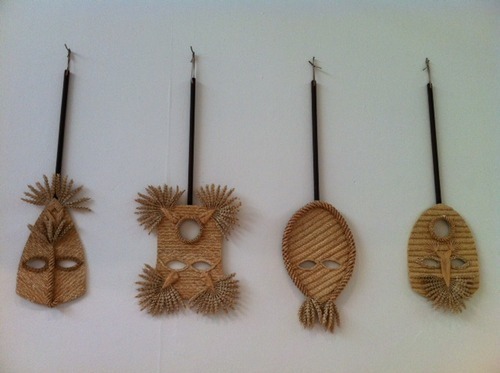
A not too rambling ramble on making and the politics of work.
Last month, inspired by an optimistic morning at Milton Keynes Gallery, I drove to Wysing Arts Centre for an exhibition and artist's talk by one of their current artists in residence, Jonathan Baldock.
I needed to experience this work in the flesh because I had been captivated by the image on the invitation card. Figure in Hand-crocheted Rock costume is a photograph of a one-armed, slug or walrus-like crocheted figure. The person inside the costume is casually seated as if relaxing and, though ungainly, the stuffed and bulbous figure is tastefully striped in blue, black, brown and shades of beige.
I have become very enthusiastic about hand crafts - the so-called gentle arts - and how they are used by people in their everyday lives, for pleasure, for self-realisation and sometimes as a means of non-confrontational activism. I am interested in how artists make connections in their work to these everyday or vernacular objects and how they connect with the people that make them.
Arriving slightly late I was extremely happy to see both artist and interviewer encased in crochet, seated on a small stage towards the back of the gallery - both in the exhibition - and observing and commenting on it. All around them were Jonathan’s hand-made objects and costumes. There are large felt boulders, slightly scary corn dolly masks, brightly coloured whips, shoes, beautiful exaggerated beards and a replica Barbara Hepworth sculpture in felt, lovingly hand sewn.
When asked if he wanted his work to have a use, Jonathan replied that he saw the exhibition as a stage, with each object a character waiting to perform. This particular performance is waiting for us, the audience, to bring these objects to life. They are social objects. This is where their use and meaning resides.
The Hand-crocheted Rock costume is not particularly useful for the wearer: the big stuffed feet are cumbersome, the single arm limiting. This work is not useful in the sense that a traditional craft object may have a functional use. Jonathan's use of hand-craft and folk art evokes both lost, past communities and traditions and alludes to possible new ones: the slightly mystical worlds of guilds, societies and frolicking Morris Men, and the knitting groups and crafters who meet in a 'fellowship' that William Morris would have readily understood and advocated.
I'm sure I'm not the first to raise the idea of the fetish in relation to Jonathan’s work. Not just for the Freudian and all too obvious sexual connotations of the fetish, but for the way that Marx uses the idea of the fetish to describe the way that we forget the underlying social values and social relationships of objects in favour of their consumer, commodity value. I think that why we have some small joy in the hand-made is because it brings us back in touch with the social value of objects and the social value of making for more than consumerism's sake.
That these pieces are hand-made, some by the artist, some commissioned from craftspeople and some by his mother, is playfully political. They are both tactile and tactical and allow for subversive pleasures.
The industrial revolution tried to separate thinking and making, with the former being more valued than the latter. Work by artists like Jonathan acknowledges the importance of thinking through making, and so challenges this hierarchy. Both class and gender are obviously also important here.
This was the second exhibition I’d recently seen which featured work using corn dollies. In the current show at Castlefield Gallery, Anne-Marie Culhane's Corn Dollies performance takes place outside the Houses of Parliament. An uncanny dance of non-confrontational activism.
I’m not aiming to simplify this work into a thesis on craft and folk arts, but I am enjoying the material complexity of these playful, tactical objects. I’m also sure I’m not the only person who feels that capitalism hasn’t worked; these works allow us to perform new relationships to work and to making, to re-invent our traditions.
Which leads me to our current commission, We Are Now. Artist Laurence Payot is working with us in Dunstable to excavate a new folklore and to create and perform a new folk tradition. She has assembled a fabulous image archive of world folk traditions in her blog about this work here.
Folk arts are fascinating because like all the arts part of their usefulness is in both their social value and in their magic. There is a reason why so many artists have referenced the 1973 cult film The Wicker Man in their work. Folk arts embody magical thinking and ritual; we only have to look at Morris Dancing. See here for example artist Faye Claridge’s portraits of the Bedford Morris. Can anyone explain the purpose of Morris Men without talking about magic and ritual? This isn't about an instrumental usefulness; this is about the arts being a central part of living.
Laurence is collaborating with people in Dunstable to create what she has called Social Sculpture. Through telling stories and through making she is creating connections both between people and each other and between people and the town and downs.
Like in much of her previous work she is creating a new tribe, through people coming together to spend time making, and through magical thinking and imagining. In this instance the work will not exist at all without its performers, the work is the performance. That is where its value and meaning will lie. Together with Laurence, they will perform a new magic - a new folk tradition.
Dawn
#wysing arts centre#milton keynes gallery#jonathan baldock#crochet#william morris#folk#art#collaboration#we are now#faye claridge#dunstable#laurence payot
2 notes
·
View notes
Text
Things beginning with P
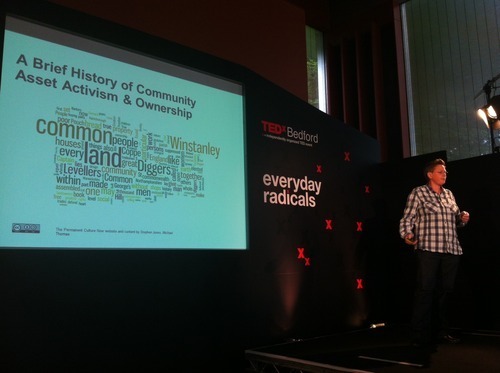
Last Saturday in Bedford I was inspired by people, by places and by pants. The pants bit was completely unexpected.
I was in a room that was passionate about DIY, not shelf building but people committed to just getting on with doing it for themselves and making things happen. I was at TEDxBedford.
TEDx is a global phenomenon based on the concept of 'ideas worth sharing'.
Our theme for Saturday was 'Everyday Radicals' although we were encouraged by 'make do and mend' activist, Jen Gale to think of ourselves as "a little less radical and a bit more everyday.” Why shouldn't activism and passion be an everyday thing?
This was a day about personal action leading to change. From architect Cany Ash re-thinking and re-making public space through anti-architecture to illustrator David Litchfield's reclaiming of his own creative time to make a drawing a day, which led to all kinds of changes in his life.
A common theme that came through was the importance of relationships built on respect and trust - whether it was Mark Kelly from Marillion talking about crowd funding their concert tour and CD or Dan Thompson, artist and community activist talking about his work with people and places.
I was taken with Dan's notion of Place Shaking – and the role that the arts and artists can play in shaking up a place through exploring, getting lost, getting it wrong and through this creating new friendly networks and collaborations.
Everyday Radicals is the perfect theme for Bedford, our hometown is the home of non-conformatism. Bedford has always welcomed and supported new thinking, from John Howard's prison reforms to Joanna Southcott's Panacea Society via John Bunyan.
There was plenty here to inspire positive actions big and small. I have pledged to stop buying wasteful bags of salad and to attempt growing my own - thanks to seeds from gardener and forager Jane Perrone. I will also be getting new pants from Becky John.
Finally for your own little bit of TED inspiration, and for the stunning image of a mermaid in a wheelchair, watch artist Sue Austin talk about the relationship between creativity and an engaged citizenry in her work.
Dawn
#collaboration#community#art#artists#TEDxBedford#activism#networks#david litchfield#mark kelly#cany ash#jen gale#jane perrone#dan thompson#sue austin#home towns#TEDx
0 notes
Photo
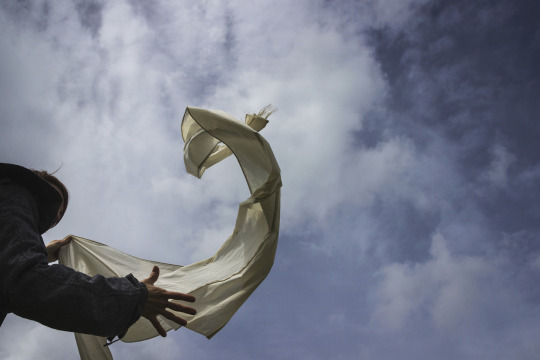

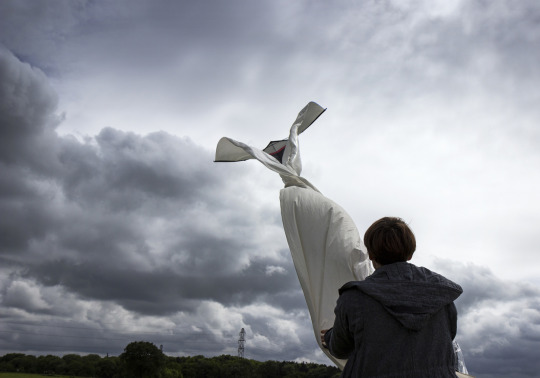
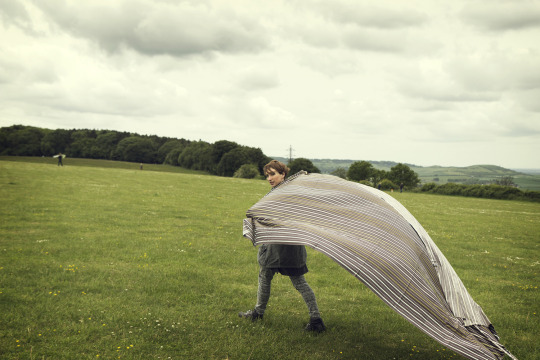

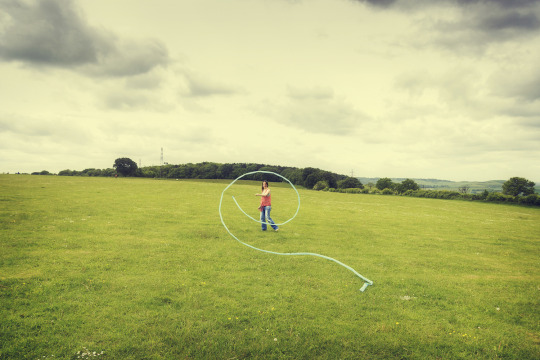
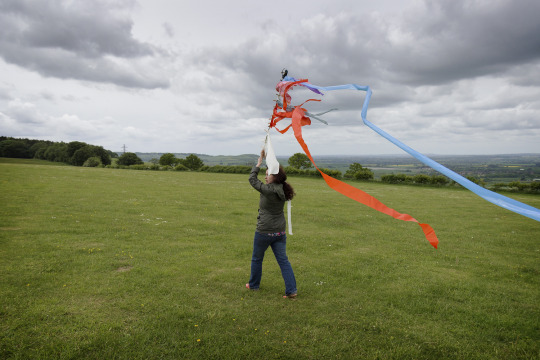
This weekend the Bedford Creative Arts team and artist Laurence Payot met up with kite display team The Flying Squad on Dunstable Downs, to experiment with wind and costumes for our summer commission, We Are Now
Hundreds of people from Dunstable and the surrounding areas will get involved over the summer, in a series of activities that will culminate in a grand costumed procession on the downs.
Together they will create the 'legend of tomorrow'.
You can also check out the project's blog for more inspiration at www.we-are-now.co.uk
Photography by Ben Salmons
#we are now#laurence payot#dunstable#dunstable downs#legend#folklore#community#collaboration#wind#costume#art#folk
2 notes
·
View notes
Video
youtube
In 2012 Bedford Creative Arts worked with composer Johnny Parry, who brought together a big-hearted army of people to develop a cycle of songs, written and performed in collaboration with the public. Hundreds of local people were involved in contributing lyrics, before a new community choir was formed to rehearse and finally perform the songs.
The premiere performance of Concerto Magnificent: An Anthology of All Things was at Bedford Corn Exchange in September 2012. A sold-out audience of 400 experienced grand gestures of love and death expressed through an all-consuming spectacle.
This film documents the making of this spectacular work.
0 notes
Photo
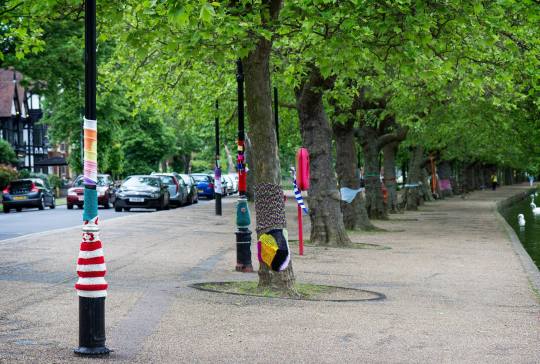
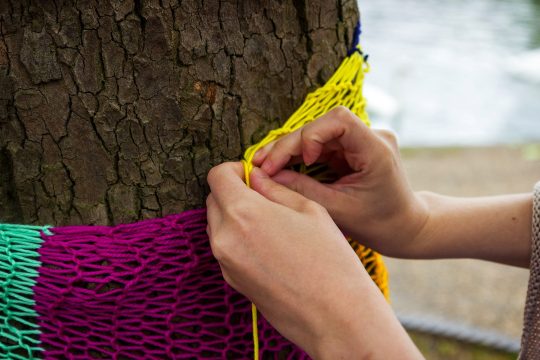


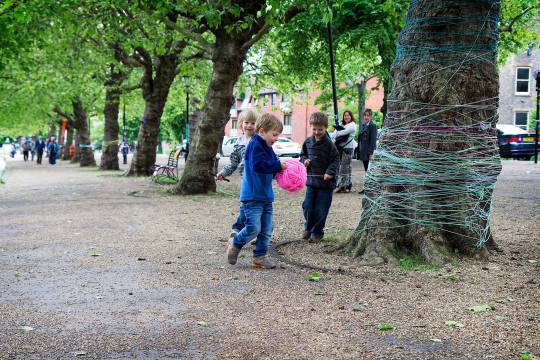
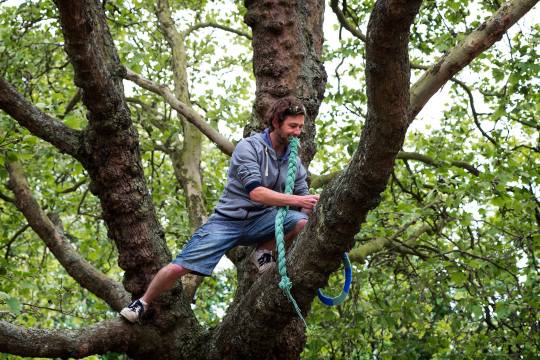
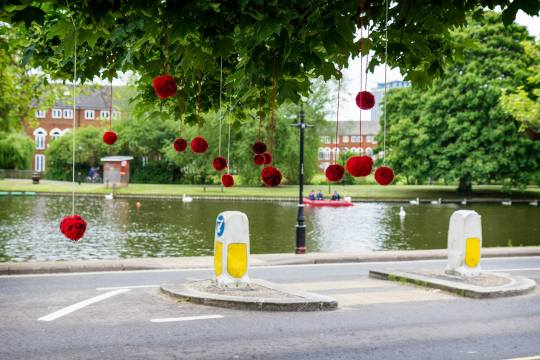
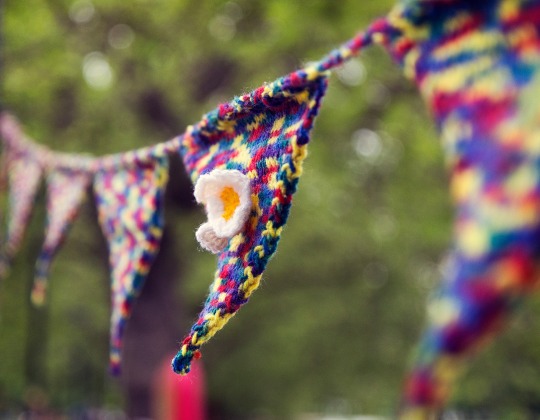
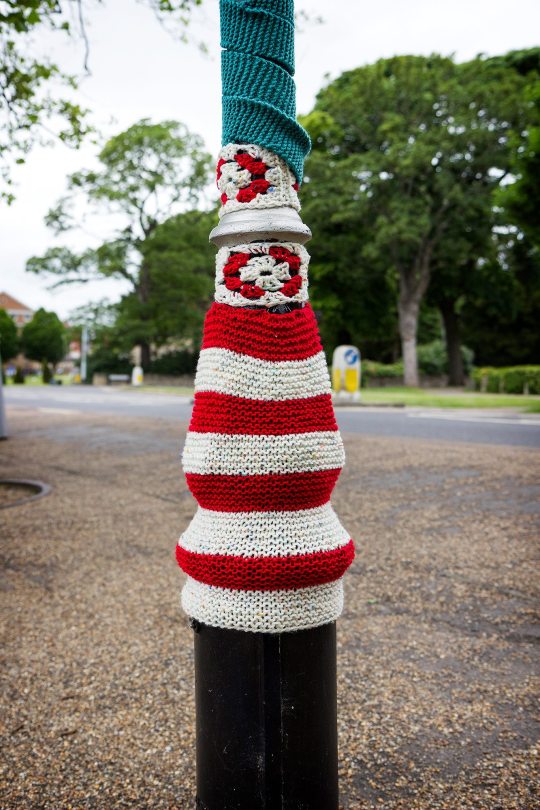
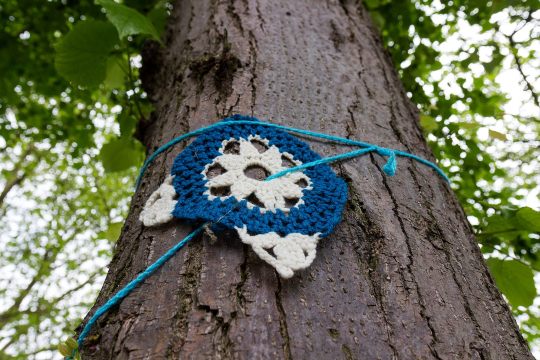
Winner of a Bedford Creative Arts Mini Commission, Liz Wright led a team of locals to yarn bomb Bedford's Embankment in June 2013.
Photography by Ben Salmons
More about mini commissions: http://www.bedfordcreativearts.org.uk/index.php/commissions/
#bedford#yarnbombing#liz wright#mini commission#wool#yarn#knitting#community#collaboration#made in bedford
1 note
·
View note
Photo
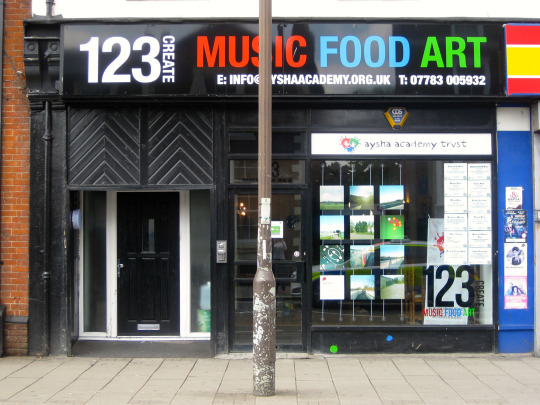



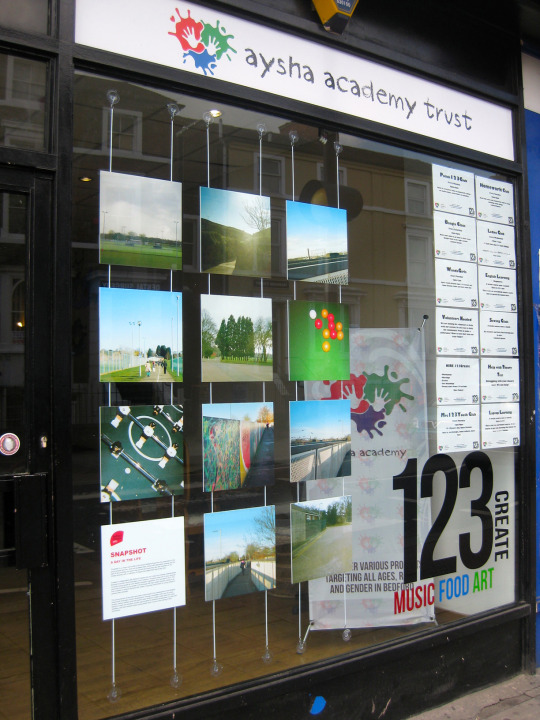
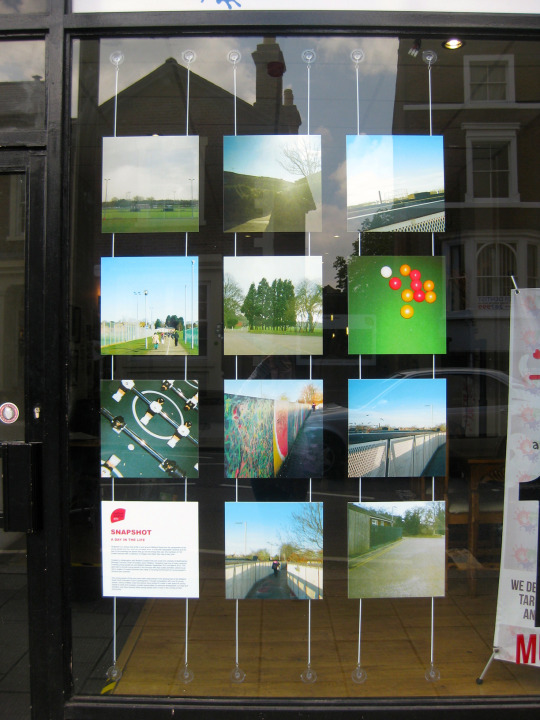
Today I installed an exhibition I was asked to put together for Bedford Creative Arts.
Featuring photographs taken by the young people who live, work and socialise in the Midland Road area, it is to act as a showcase of the daily lives of members of their community.
It was a really fun little task to put together and I think it looks pretty good. Hopefully the photographers themselves will be pleased with the results!
6 notes
·
View notes
Photo
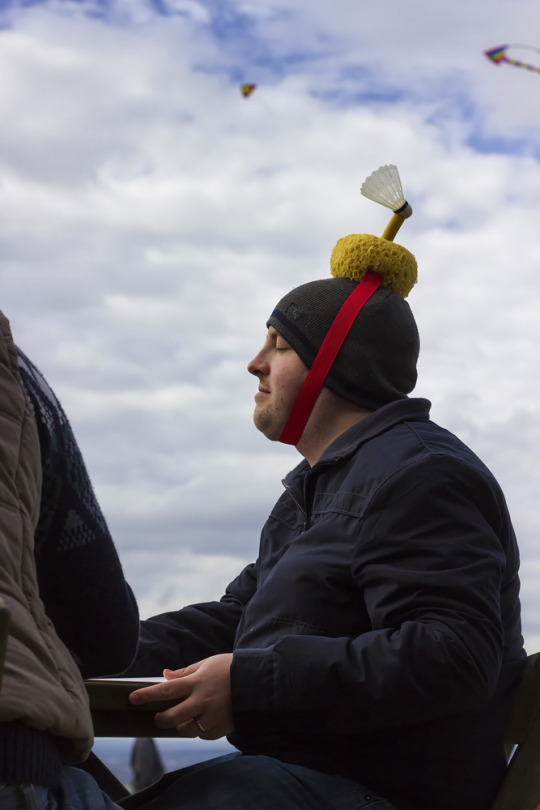
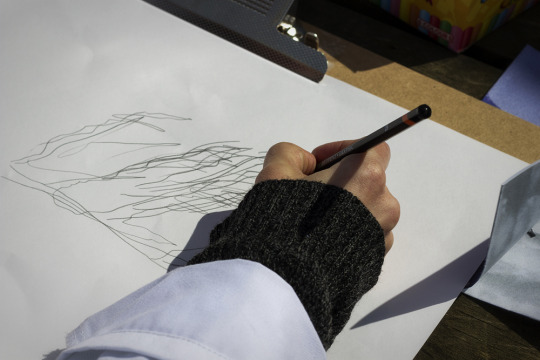
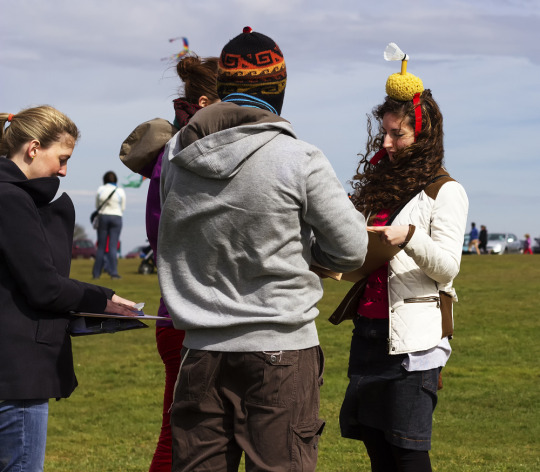


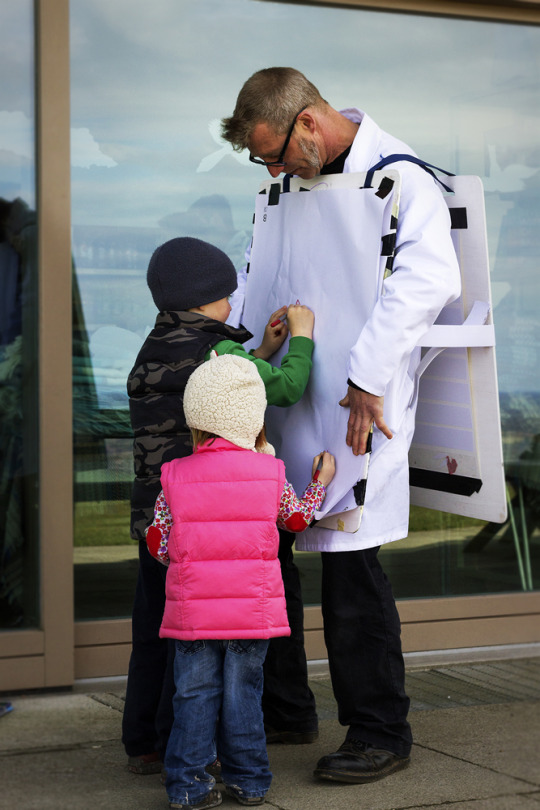
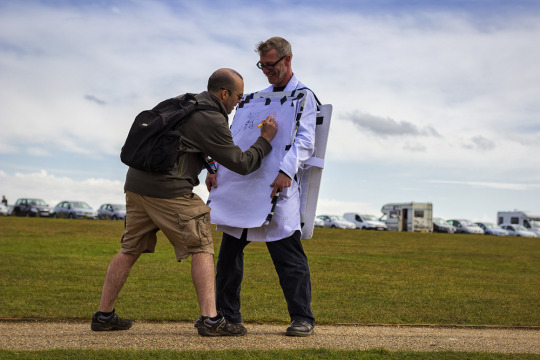

14th April 2013, Dunstable Downs.
Bedford Creative Arts' summer commission kicked off in Dunstable with artists Laurence Payot, Ailie Rutherford, Kezia Ruth and Scott Farlow.
Photography by Ben Salmons.
WE ARE NOW - let's create the legend of tomorrow
#dunstable#dunstable downs#national trust#wind#laurence payot#scott farlow#ailie rutherford#kezia ruth#participation#taking part#folklore#legend#automatic drawing#drawing#we are now
0 notes
Photo
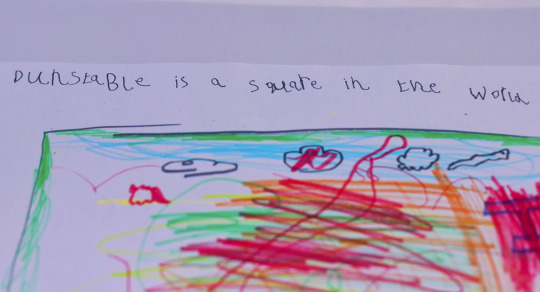
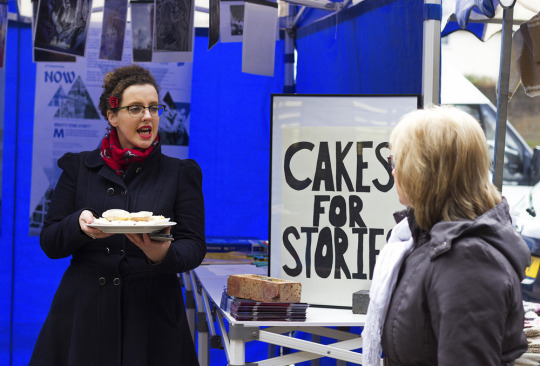

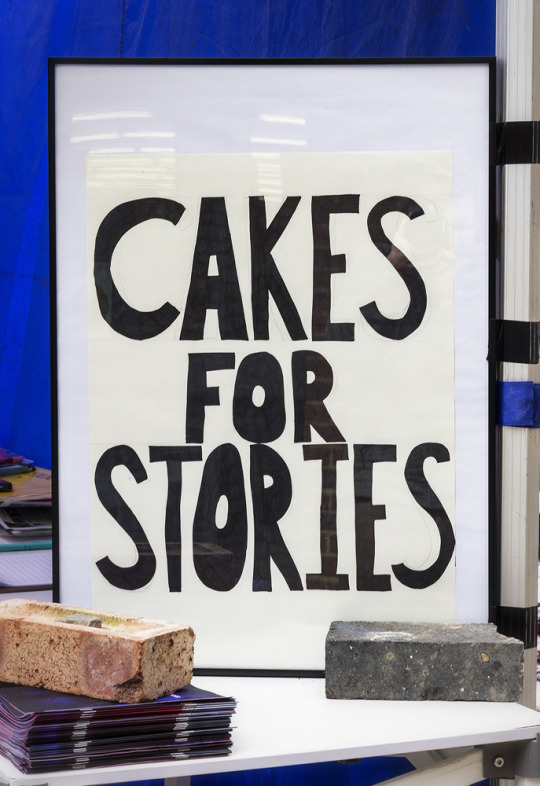

13th April 2013, Dunstable Market.
Bedford Creative Arts' summer commission kicked off in Dunstable with artists Laurence Payot, Michelle Thomas and Scott Farlow.
Photography by Ben Salmons.
WE ARE NOW - let's create the legend of tomorrow
#dunstable#art#laurence payot#michelle thomas#scott farlow#markets#legend#folklore#storytelling#participation#taking part#stories#we are now
0 notes
Text
A blog about folk
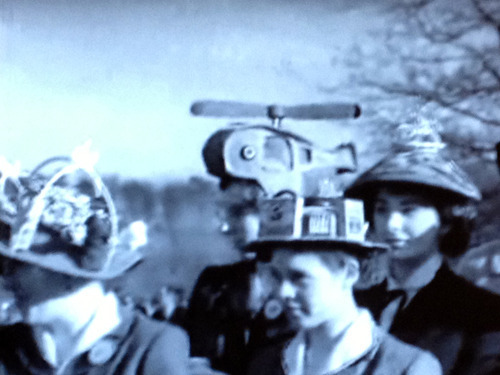
Jennie
#bedford#dunstable#laurence payot#folk#andy holden#folklore#legend#stories#art#together#collaboration#participation
0 notes